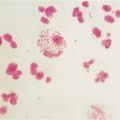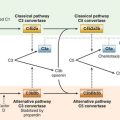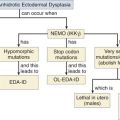CASE 40
Bill has cystic fibrosis and received a double-lung transplant approximately 8 months ago. When you see him in your follow-up clinic today he looks far more short of breath than on his last appearance. Your nurse measures his oxygen saturation at rest on room air (normal, nonsmoker: 97%-100%), and you are disturbed to find his level only 88%. He becomes quite cyanotic (low oxygen supply to peripheral tissues) with minimal exertion in your office. He has diffuse wheezes throughout the lung fields and is afebrile. There has been no recent change in immunosuppressive therapy. You admit him to a hospital for further investigation.
QUESTIONS FOR GROUP DISCUSSION
RECOMMENDED APPROACH
ETIOLOGY: CYSTIC FIBROSIS
Cystic fibrosis is an autosomal recessive disorder resulting from mutations in a gene that encodes the cystic fibrosis transmembrane regulator (CFTR), an epithelial chloride channel expressed in a number of tissues, including airways, testis, and pancreas. A mutation in this protein disrupts the normal homeostasis (ion exchange) across the lung epithelium, and a thick, sticky mucus accumulates in the airways, resulting in airway obstruction and an inability to clear inhaled pathogens. In the normal state, a thin, moist mucus layer overlies the epithelial cells such that pathogen binding is hindered while cilia that line the airways expel microbes that enter the airways.






